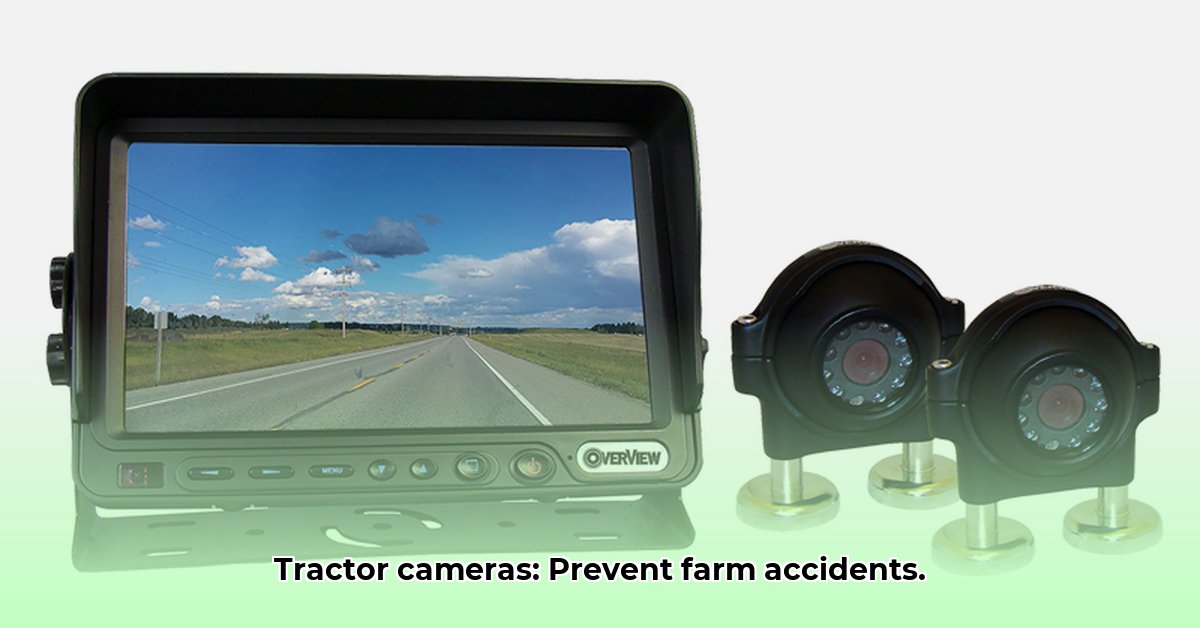
Tractor Cameras: Enhancing Farm Safety and Efficiency
Farming is inherently risky, with tractor accidents a leading cause of injuries and fatalities. Blind spots are a major contributor to these accidents, making rear and side visibility crucial for safe operation. Wireless backup cameras, and more comprehensive systems like the AgriCameras TD-Farm, are transforming farm safety by providing a near 360-degree view around the tractor. But are these systems truly worth the investment? This article delves into the benefits, drawbacks, and future of tractor cameras in modern agriculture. For more information on farm accident statistics, see this helpful resource: Ohio Tractor Accidents.
Key Takeaways:
- Tractor accidents are a significant concern in agriculture, resulting in substantial injuries and fatalities each year.
- Blind spots pose a considerable risk when operating tractors, increasing the likelihood of accidents.
- Technological advancements in tractor cameras provide farmers with enhanced situational awareness and improved safety.
AgriCameras TD-Farm: A Detailed Look
The AgriCameras TD-Farm system offers several compelling features designed to improve farm safety. It boasts wireless connectivity, providing a wide viewing range of up to 200-300 feet (depending on environmental conditions). A 720P resolution ensures clear images, even in low-light conditions, further enhanced by infrared night vision with approximately 35-40 feet of visibility. Its robust IP68 rating protects it from harsh weather and typical farm conditions. Furthermore, the system supports up to four cameras connected to a single 7-inch screen, offering comprehensive surveillance around the tractor. Isn't having a clear, all-around view a game-changer for farm safety?
Addressing Concerns and Unanswered Questions
While the features of the AgriCameras TD-Farm are impressive, some questions remain. The manufacturer claims a 70%+ reduction in backup accidents, but independent verification is needed to substantiate this claim. Similarly, the claim of one-minute installation needs clarification regarding ideal setup conditions. How does the system perform in challenging terrains with hills or dense vegetation? What are the long-term durability and maintenance requirements? These unanswered questions are critical for farmers considering this investment. How much impact does signal interference really have?
Stakeholder Impact: Farmers, Manufacturers, and Beyond
The benefits of tractor cameras extend across the agricultural landscape, impacting farmers, manufacturers, and even insurers. Farmers experience immediate improvements in safety, potentially leading to fewer accidents and reduced insurance premiums. Improved efficiency results from safer operations allowing for more focused work. Equipment manufacturers benefit from enhanced product offerings, differentiating themselves in a competitive market. But what about the long-term implications?
Short-Term and Long-Term Gains:
| Stakeholder Group | Short-Term Gains (Within a Year) | Long-Term Gains (3-5 Years) |
|---|---|---|
| Farmers & Ranchers | Increased safety, reduced accident costs, potentially improved efficiency. | Enhanced farm management through data integration, potential connection to precision systems. |
| Equipment Manufacturers | Increased sales, enhanced product appeal. | Leading position in safety technology, integrated data-driven safety features in future products. |
The Future of Tractor Camera Technology
The field of tractor camera technology is rapidly evolving. We can expect further improvements in image quality, range, and durability. Integration with fleet management systems will allow central monitoring of multiple tractors. Looking further ahead, AI-powered hazard detection and driver alerts are likely possibilities. What innovations will redefine farm safety in the coming years?
The Verdict: A Promising Step Towards Safer Farming
Tractor cameras represent a significant advancement in farm safety. The AgriCameras TD-Farm system showcases the potential of this technology. However, independent verification of manufacturer claims and further research into long-term performance are crucial. Despite the unanswered questions, the potential benefits—a safer, more efficient, and profitable farm—are significant. As technology continues to develop, tractor cameras will likely become even more essential for modern agriculture. Are you prepared to embrace this technological advancement?